Location
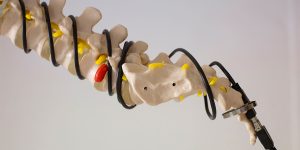
NFT (New Flesh Toys)
Guillem Sarriá Verdú (ES)
NFT consists in the design of prototypes for research into possible haptic interfaces that explore anthropomorphic questions and new forms of ergonomics. The use of these speculative artifacts as instruments generates atmospheres through specific references to sci-fi, cyberpunk mythology and sound experimentation.
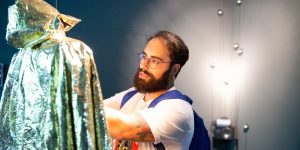
CONTRA
Miguel A. Sislian (ES)
CONTRA project presents itself as an interface with a critical character in relation to different systems. The main concepts which are analyzed are power and control of individuals in both physical and digital spaces.
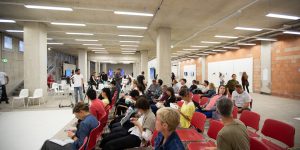
Gallery Spaces Panel VI: Paradoxes and obstacles in maintaining and staging alive biomedia art
This panel with prominent protagonists involved in the field of biomedia art discusses the unprecedented challenges to stage, transport, conserve and collect art that appropriates and subverts the most diverse technologies of the life sciences. The shift from organic representation or simulation to actual biological manipulation results in technical, institutional, regulatory, legal, ethical, bureaucratic, philosophical and aesthetical issues with regards to museum infrastructures, the status of living organisms, tissues and GMOs, and their fragility when maintaining, conserving, re-enacting or shipping them. Such works at the threshold of microperformativity and necropolitics face undesired bacterial deterioration and contamination, and cultural institutions and collectors are still ill-equipped to deal with the subsequent issues.

NISS: Network Interaction Sound Sniffer
Sergio Lecuona Fornes (ES)
NISS is a sound installation that reacts to the exchange of data carried out through a WiFi network. The soundscape produced by eight reception bells and synthesized sounds makes the hidden digital dialogues between devices perceptible.
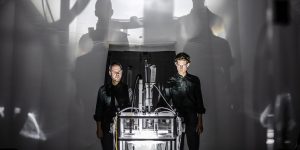
Polar Force
Speak Percussion, Philip Samartzis (AU), Eugene Ughetti (AU)
Polar Force is a phenomenological investigation of the windiest, coldest, and driest continent on earth: Antarctica. During the one-hour work, vivid multichannel Antarctic field recordings of wind, water, and ice are combined with new instruments, sampled in a live performance and a choreographed artistic “lecture” undertaken by two performers reminiscent of scientists in a remote polar field station. The immersive live performance merges the art-science-tech to comment on geopolitical issues and the climate crisis.
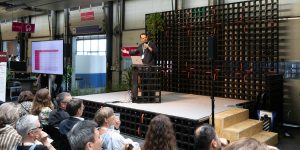
Practices & Impacts of STARTS Collaborations
FRI 6.9. | 10:00 – 12:00 Practices and impacts of interdisciplinary approaches will be discussed through innovative projects, with a special focus on the link between artificial intelligence and music.
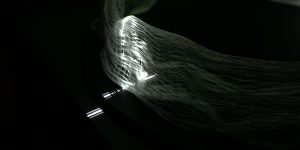
CROSSING #03
Akinori Goto (JP)
In this work, when the light from the slit is projected onto the sculpted object, the movement of walking people is revealed. By reorganizing the diverse people filmed by the artist onto a single time axis, something akin to a community moving toward a purpose takes shape. Within this is a movement that differs from physical movement.

Chilean Artist Talks
This year, for the second time, the Ministerio de las Culturas, las Artes y el Patrimonio and the Ministerio de Relaciones Exteriores | Gobierno de Chile and Ars Electronica Linz collaborated in asking artists, scientists, designers, researchers, entrepreneurs and social activists from Chile or with a Chilean background to participate in the Ars Electronica Festival and discuss the current developments and tendencies in the Chilean media art scene.
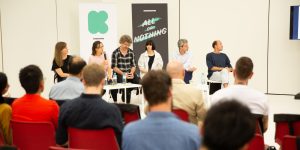
Gallery Spaces Panel V: Artists & scientists – Exploring new forms of collaboration (Scientist in Residence Program)
Just as artists today are increasingly interested in science and technology, scientists and technologists are turning to the arts as a source of new perspectives and tools for communication. This trend requires new initiatives to establish better links between the worlds of art and science, as well as between cultural and research institutions. Through its Art&D labs, Gluon supports artist residencies in laboratories of companies, research institutes and universities. Through its Scientists in Residence programme, it encourages artists to open their studios to scientists and technologists. On the basis of their experiences in these programmes, the scientists of this panel will reflect on the following questions: To what extent can these interdisciplinary collaborations stimulate innovative ideas and projects of social relevance? What challenges do scientists have to face in working together with artists? And how can organizations help them achieve meaningful exchanges?
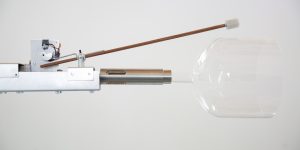
Smart.ing Bodies
Evelina Rajca (PL)
Sand, or to put it more precisely high-purity silicon dioxide particles, is the essential raw material from which we make concrete, glass, fiberoptic cables, computer chips, and other high-tech hardware. The installation Smart.ing Bodies features “glass instruments” made of quartz sand that Evelina Rajca collected from disappearing beaches and mountains around the world. The multisensory sound installation consists of those two glass resonators, sensors, motors, and an algorithmic composition created partly by AI learning processes. In order to keep on playing and to avoid a “resonance disaster” (the destruction of the glass or motor), the algorithmic program has to learn to conduct a variety of smart frequencies. What can be heard is the sound of sand, which is pure yet complex and ever-changing.


